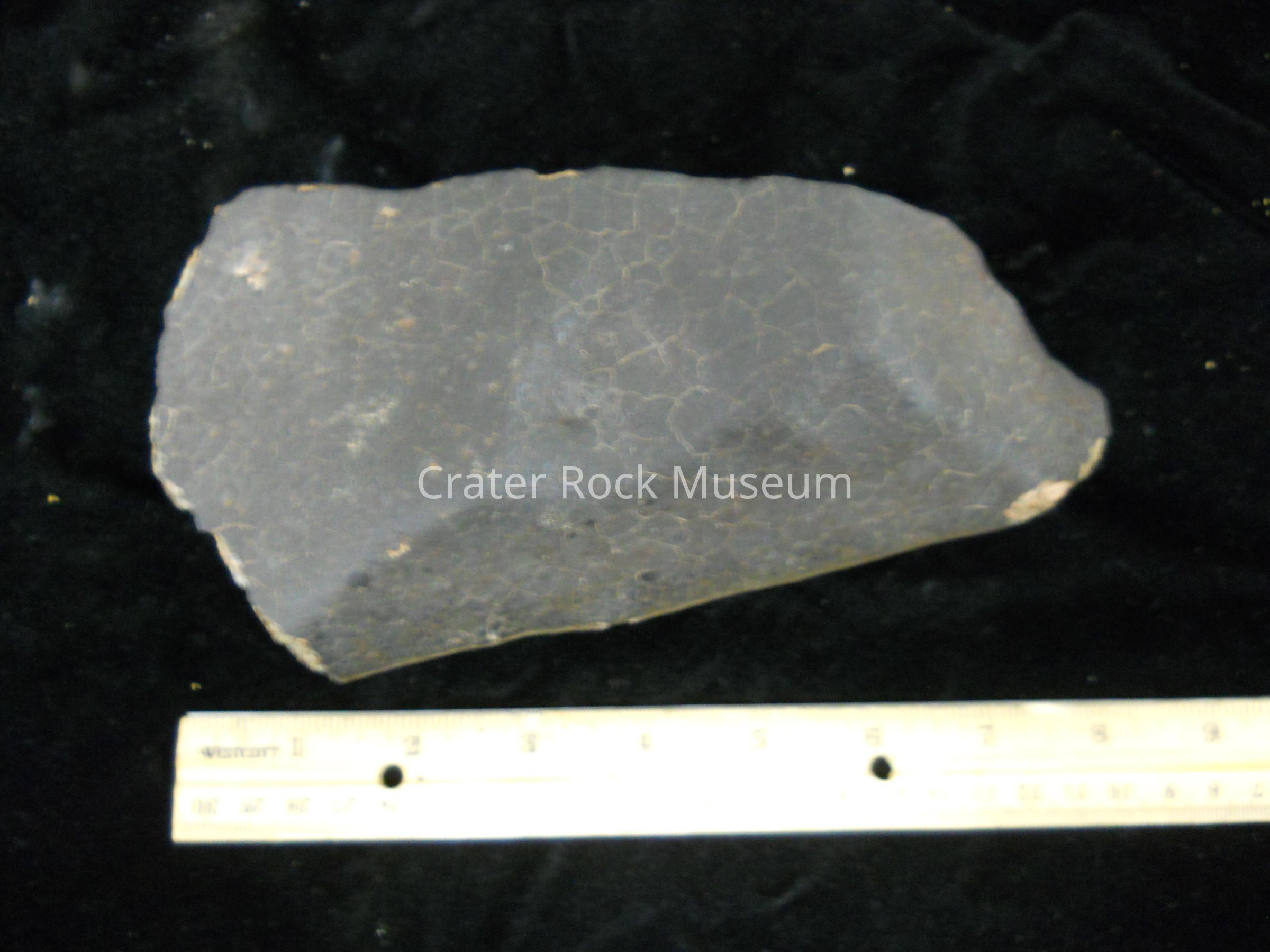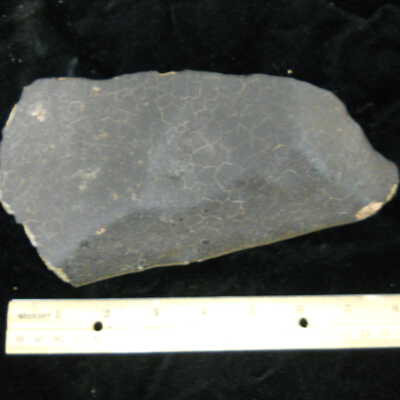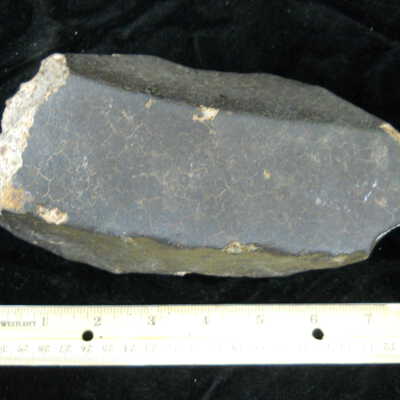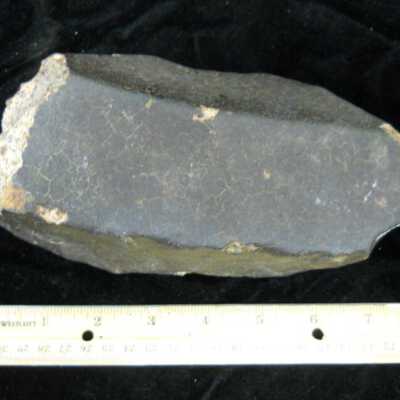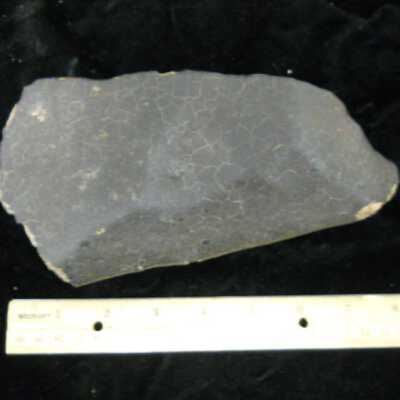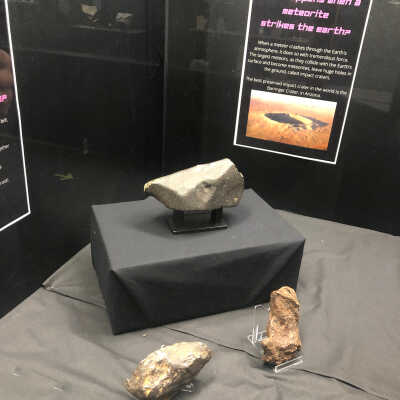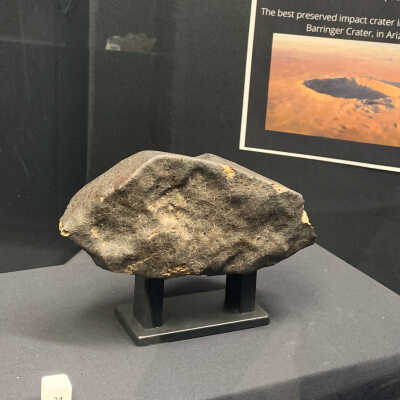Meteorite
Name/Title
MeteoriteEntry/Object ID
2012.2.12Description
Chemical Composition: Fe,Si,Ni Crystal System: Monoclinic System Description: Common Name: Chondrite Meteorite Chemistry: Fe,Si,Ni Group: Meteoroids Location: Unknown Description: This is a fairly large meteorite with a dark (melted) crust and visible stony material inside. It also has an orientation of trajectory. Phisical Charateristics: Chondrites are stony meteorites that have not been modified due to melting or differentiation of the parent body. They formed when various types of dust and small grains that were present in the early solar system accreted to form primitive asteroids. Prominent among the components present in chondrites are the enigmatic chondrules, millimeter-sized objects that originated as freely floating, molten or partially molten droplets in space; most chondrules are rich in the silicate minerals olivine and pyroxene. Chondrites also contain refractory inclusions (including Ca-Al Inclusions), which are among the oldest objects to form in the solar system, particles rich in metallic Fe-Ni and sulfides, and isolated grains of silicate minerals. The remainder of chondrites consists of fine-grained (micrometer-sized or smaller) dust, which may either be present as the matrix of the rock or may form rims or mantles around individual chondrules and refractory inclusions. Embedded in this dust are presolar grains, which predate the formation of our solar system and originated elsewhere in the galaxy. Most meteorites that are recovered on Earth are chondrites: 86.2% of witnessed falls are chondrites,[1] as are the overwhelming majority of meteorites that are found. There are currently over 27,000 chondrites in the world's collections. The largest individual stone ever recovered, weighing 1770 kg, was part of the Jilin meteorite shower of 1976. Chondrite falls range from single stones to extraordinary showers consisting of thousands of individual stones, as occurred in the Holbrook fall of 1912, where an estimated 14,000 stones rained down on northern Arizona. Hardness: 6 Orthoclase Kingdom: Animalia (Animals) Luster: Glassy Rock Type: MetamorphicCollection
Mike Hammer Fossil CollectionAcquisition
Accession
2012.2Source or Donor
Mike HammerAcquisition Method
Long-term LoanOther Names and Numbers
Other Numbers
Other Number: MKH-12
